Keeping your home comfortable involves more than just setting the thermostat. Your heating, ventilation, and air conditioning, or HVAC, system works hard year-round to maintain ideal temperatures and air quality. Many busy homeowners and renters overlook the straightforward steps that significantly extend its life, prevent costly breakdowns, and improve your home’s air. This guide simplifies HVAC maintenance, offering practical, actionable insights you can easily integrate into your seasonal routines, even with a packed schedule. You will learn how simple, consistent care protects your investment, saves money, and ensures your living space remains a haven of comfort.

Why Seasonal HVAC Care Matters For Your Home and Wallet
Your HVAC system is one of the largest energy consumers in your home, impacting your comfort and your budget. Neglecting its care leads to decreased efficiency, higher utility bills, and potentially expensive repairs. Regular seasonal hvac care offers a multitude of benefits, directly affecting your everyday life.

Improved Energy Efficiency
A well-maintained HVAC system runs more efficiently. Dust and debris accumulate on coils, motors, and filters, forcing the system to work harder to heat or cool your home. This increased effort translates directly into higher energy consumption. According to Energy Star, proper maintenance, including regular air filter change, can improve your system’s efficiency by 5 to 15 percent. This means tangible savings on your monthly energy bills.
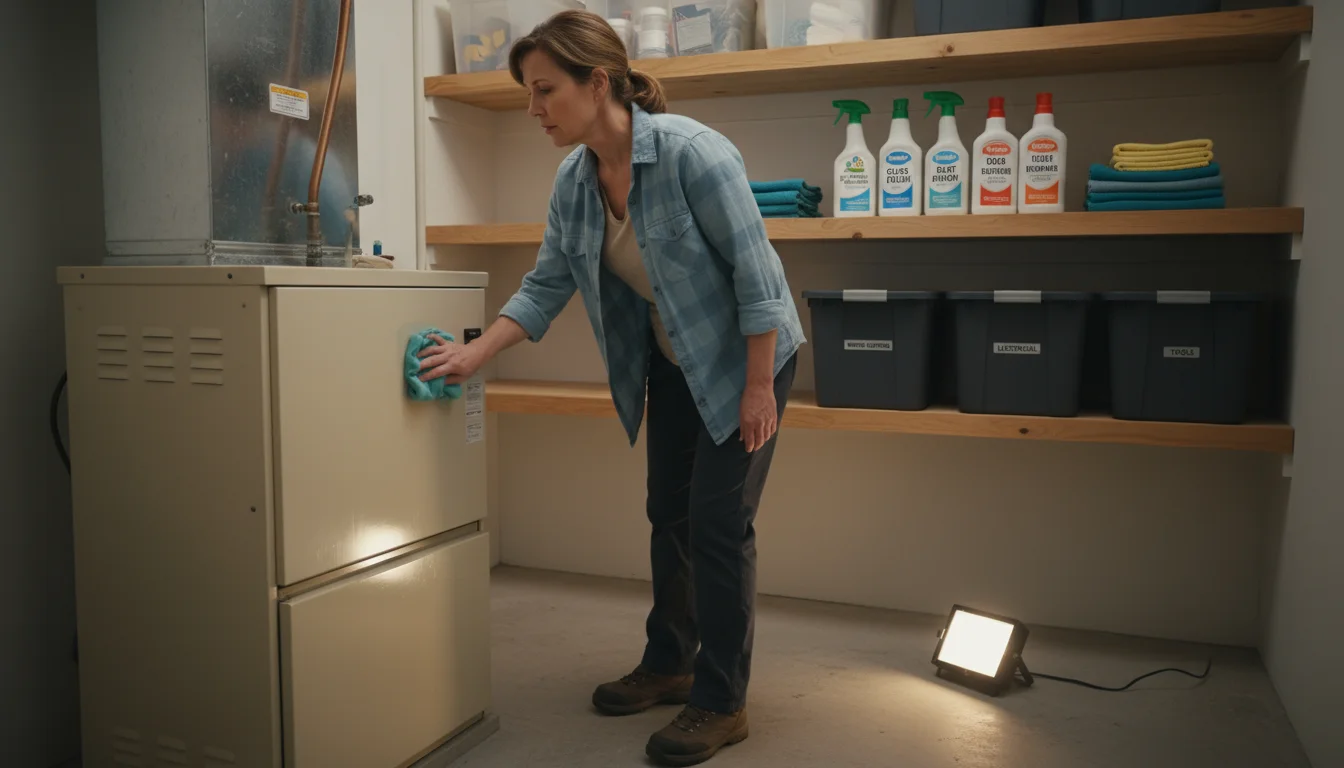
Extended System Lifespan
Like any complex machinery, your HVAC system benefits from consistent attention. Dirt and wear put stress on components, leading to premature failure. Regular hvac maintenance addresses these issues before they escalate, extending the overall lifespan of your furnace and air conditioner. You get more years of reliable service from your existing equipment, delaying the significant expense of a full system replacement.
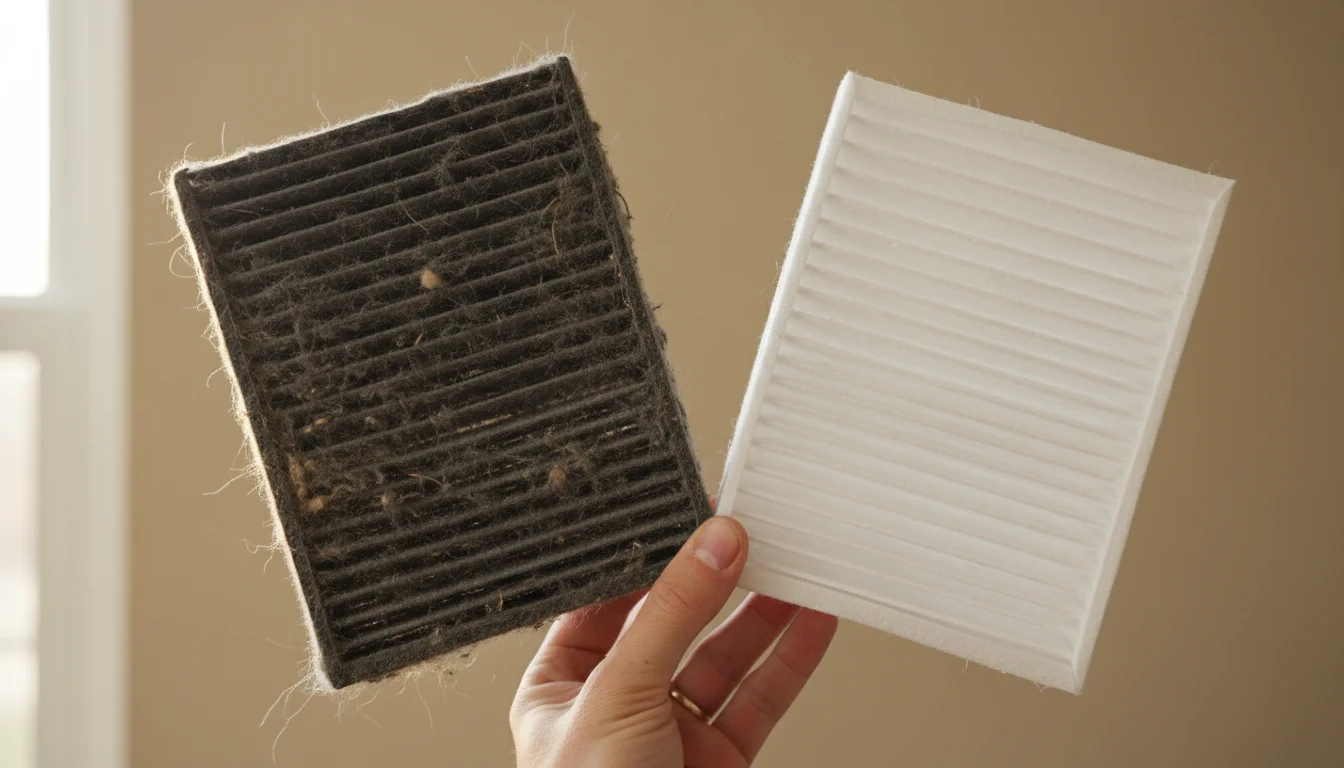
Enhanced Indoor Air Quality
Your HVAC system plays a crucial role in the air you breathe every day. It circulates air and, with proper filtration, removes airborne particles like dust, pollen, pet dander, and mold spores. A dirty system, particularly a clogged air filter, allows these contaminants to recirculate throughout your home. This can exacerbate allergies and respiratory issues. The Environmental Protection Agency (EPA) emphasizes that improving indoor air quality safeguards your health, especially for those with sensitivities.

Fewer Breakdowns and Greater Reliability
The last thing anyone wants is their AC to fail in a heatwave or their furnace to quit in a blizzard. Many unexpected breakdowns stem from preventable issues like clogged drains, dirty coils, or loose electrical connections. Seasonal hvac care helps identify and rectify these minor problems before they cause a complete system failure. This provides you with peace of mind and consistent comfort, avoiding the stress and inconvenience of emergency repairs.

The Foundation: Understanding Your HVAC System
You do not need to be an expert to maintain your HVAC system, but a basic understanding of its components helps you perform effective seasonal hvac care. Most residential HVAC systems include a furnace, an air conditioner, an air handler, and ductwork. They work together to regulate your indoor climate.
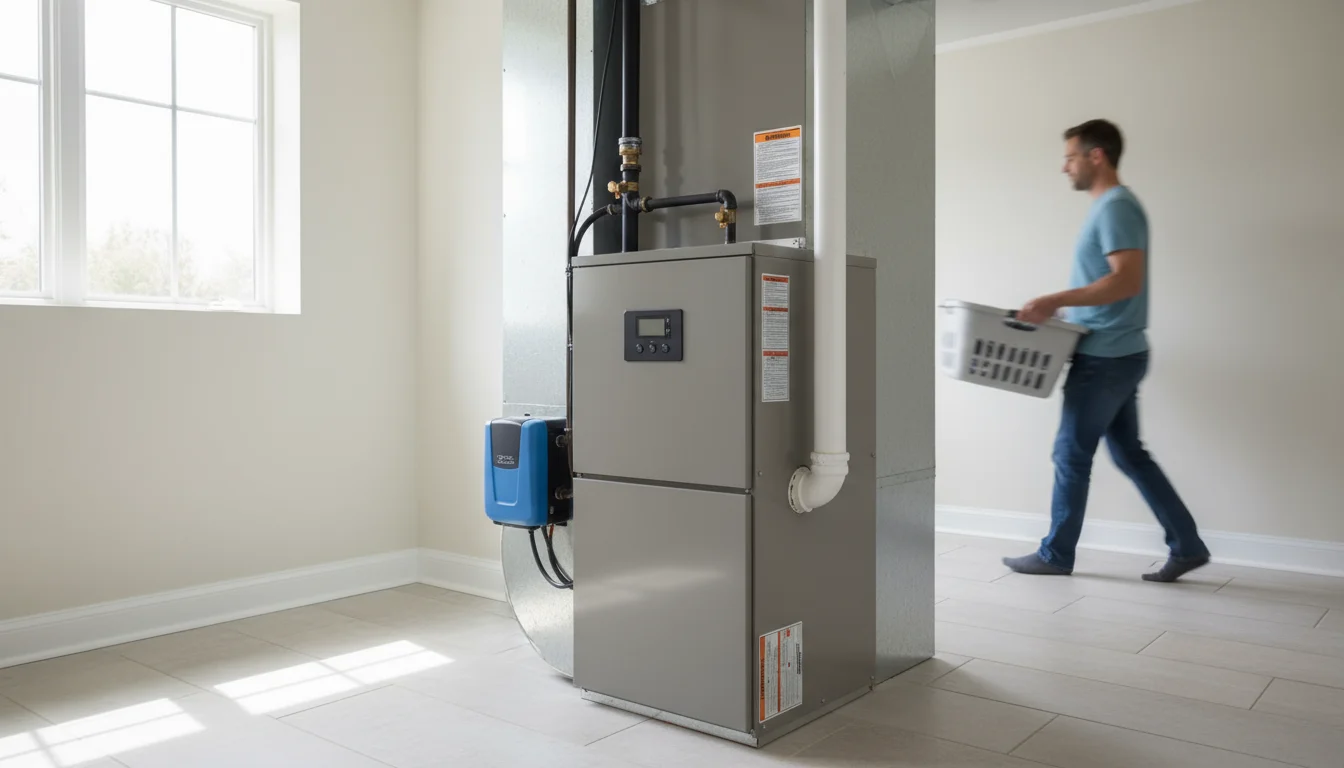
The Furnace
This component heats your home, typically using natural gas, propane, or electricity. It contains a heat exchanger, a blower motor, and a filter. Hot air from the furnace distributes through your home via ductwork.
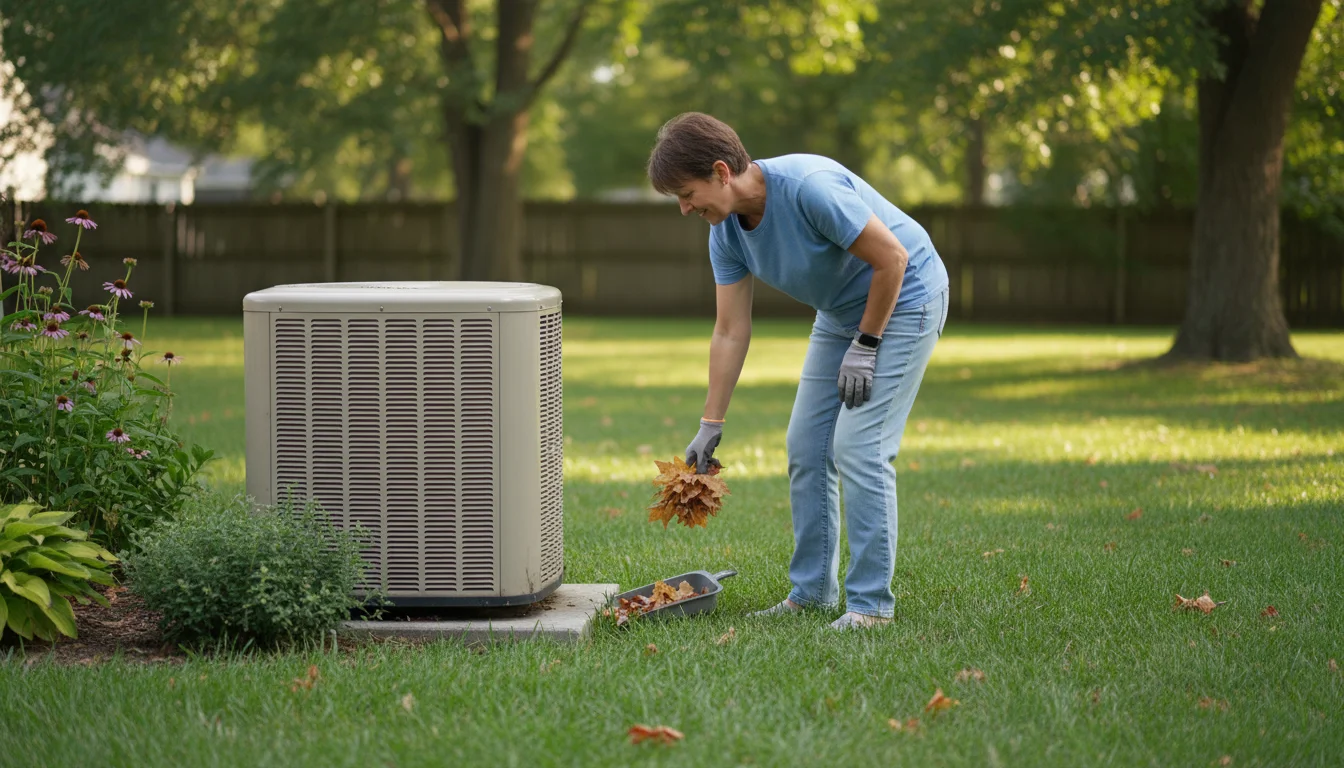
The Air Conditioner (AC)
The AC cools your home. It includes an outdoor unit (condenser and compressor) and an indoor coil (evaporator coil), usually located above the furnace. Refrigerant circulates between these units, absorbing heat from inside and releasing it outside.
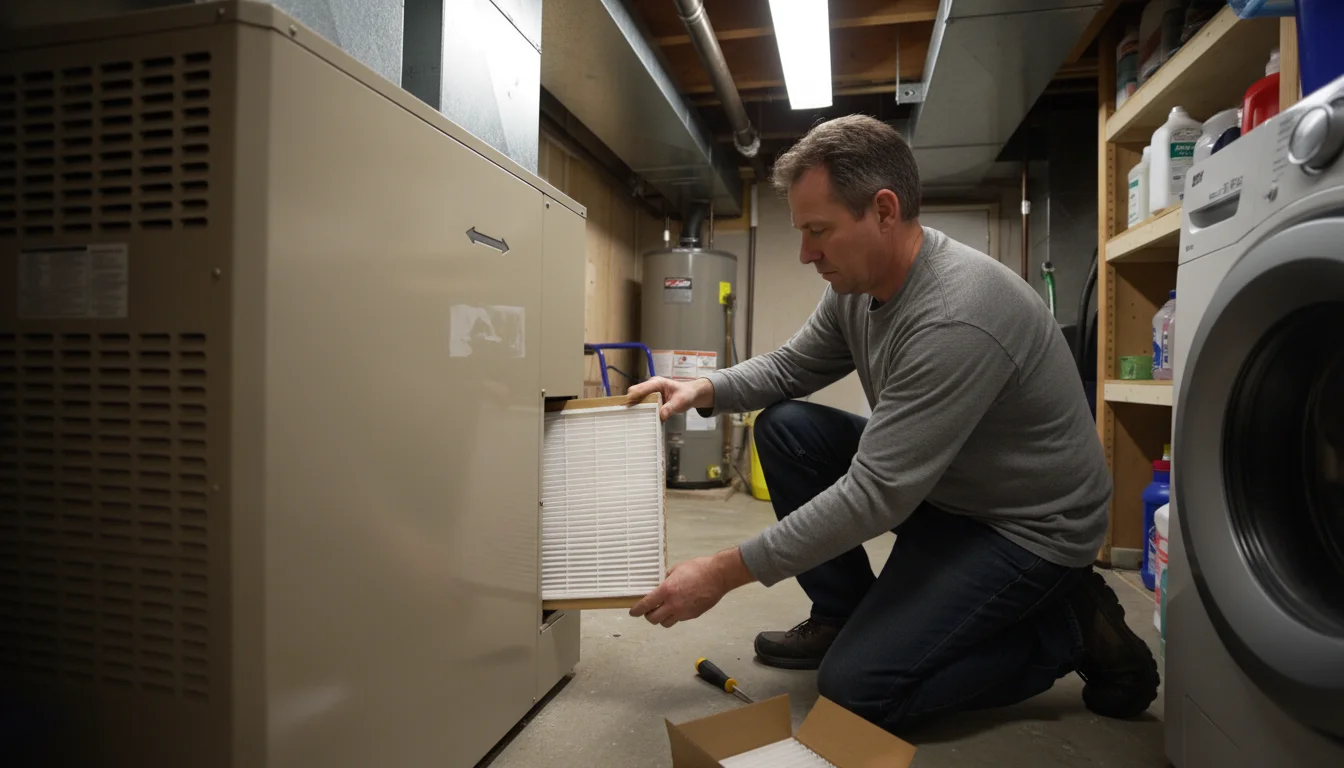
The Air Handler
Often integrated with the furnace, the air handler contains the blower motor that pushes conditioned air through your ductwork. Whether you are heating or cooling, the blower motor is responsible for air circulation.

Ductwork
These are the pathways, typically metal or flexible tubes, that distribute conditioned air throughout your home and return stale air to the HVAC unit for reprocessing. Leaky or dirty ducts compromise efficiency and air quality.
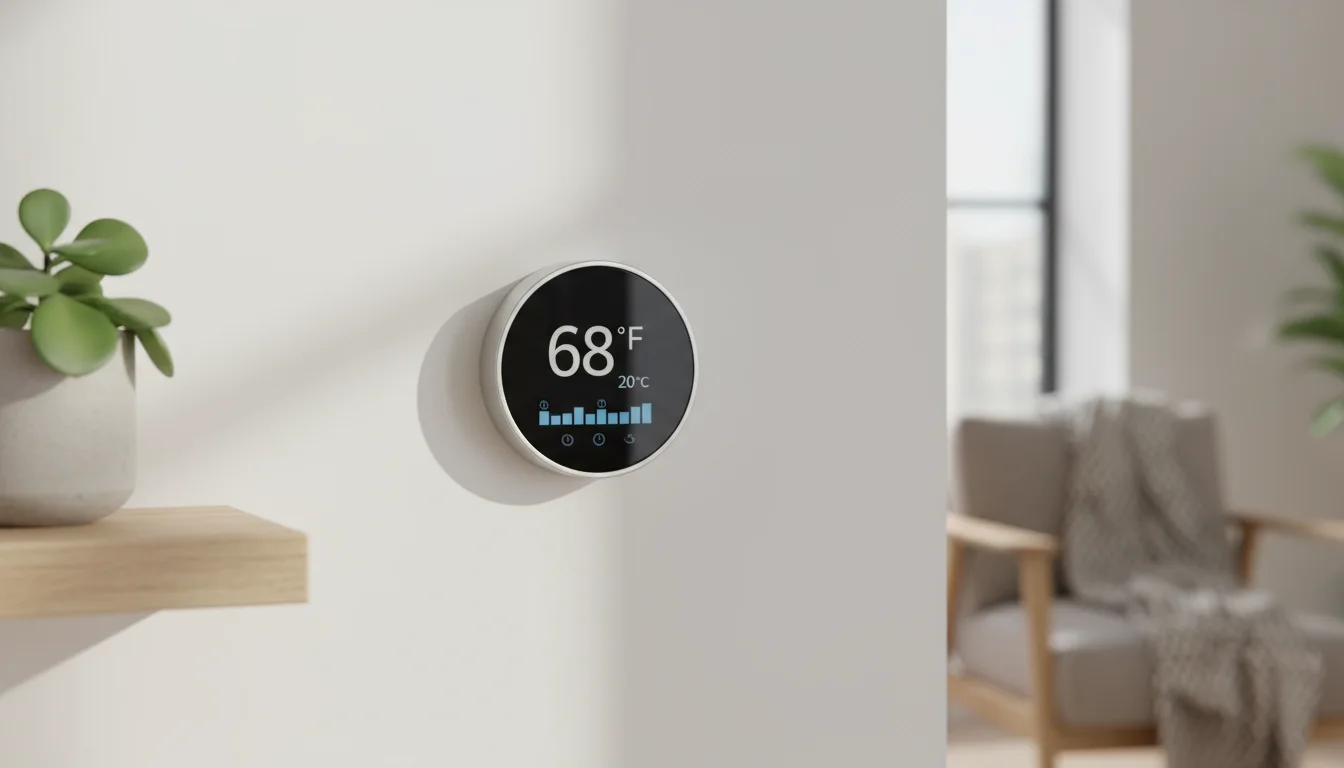
Thermostat
This is your control center. Modern programmable or smart thermostats allow you to set schedules and remotely manage temperatures, optimizing energy use.

Spring Refresh: Preparing for Warmer Days
As winter fades and spring blossoms, your HVAC system transitions from heating to cooling. This makes spring an ideal time for thorough hvac maintenance, setting the stage for efficient summer cooling and cleaner indoor air. Focus on these key tasks to prepare your system for the warmer months.
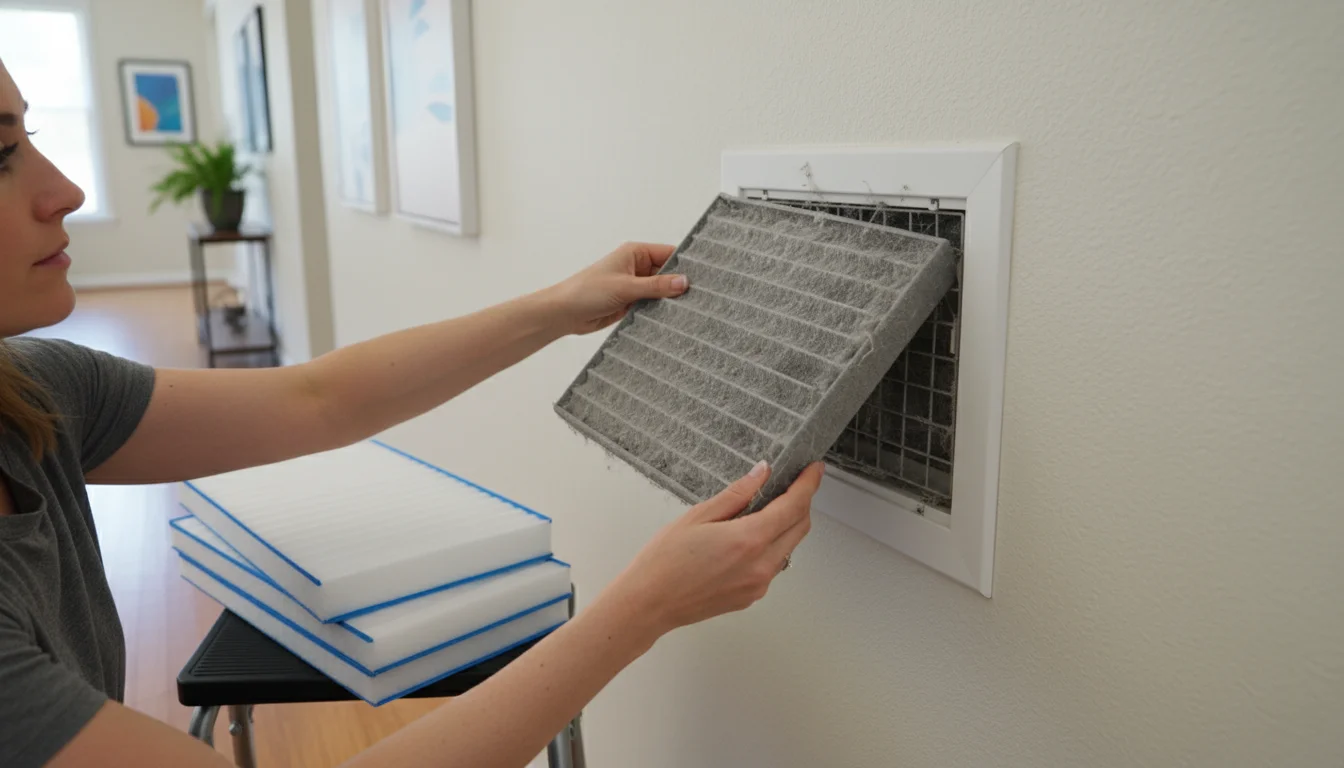
1. Change Your Air Filter
This is arguably the most important and easiest hvac maintenance task you perform. A clean air filter is fundamental for system efficiency and indoor air quality. During winter, your heating system likely worked hard, collecting dust, pet dander, and other particles. Replacing this clogged filter prevents these contaminants from entering your home’s air and improves airflow, reducing strain on your system. For most homes, changing the air filter every one to three months is a good general guideline. If you have pets, allergies, or live in a dusty area, you might need to change it monthly. Make it a habit to inspect it monthly and replace it when it appears dirty.
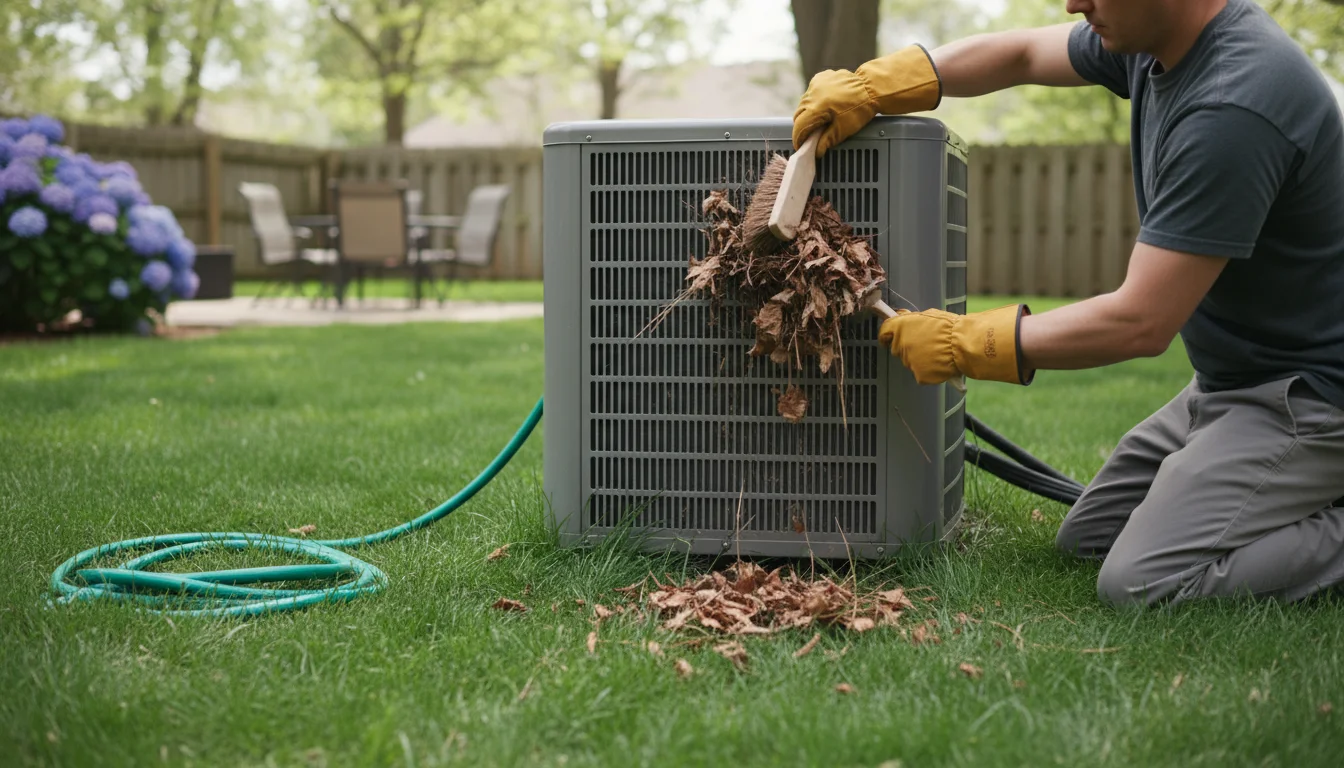
2. Clean Your Outdoor Condenser Unit
Your outdoor AC unit, or condenser, withstands the elements all year. Over winter, leaves, twigs, dirt, and debris can accumulate around it, blocking airflow. Begin by turning off the power to the unit at your outdoor disconnect switch for safety. Then, clear away any visible debris from the top and sides. Use a soft brush or a garden hose on a gentle setting to rinse the coils and fins. Be careful not to bend the delicate fins. This simple cleaning improves the unit’s ability to dissipate heat, crucial for efficient cooling. For specific guidance on DIY cleaning for your condenser, Family Handyman provides excellent step-by-step instructions.

3. Check the Condensate Drain Line
Your AC unit produces condensation as it cools the air. This water drains through a condensate line, typically a PVC pipe. Over time, algae and mold can grow in this line, causing blockages. A clogged drain line causes water to back up, potentially leading to leaks, water damage, or even system shutdown. Locate the access point for your drain line, usually near the indoor evaporator coil. You can often flush it with a mixture of distilled vinegar and water to clear minor blockages. If you see standing water in the drain pan, you likely have a clog.
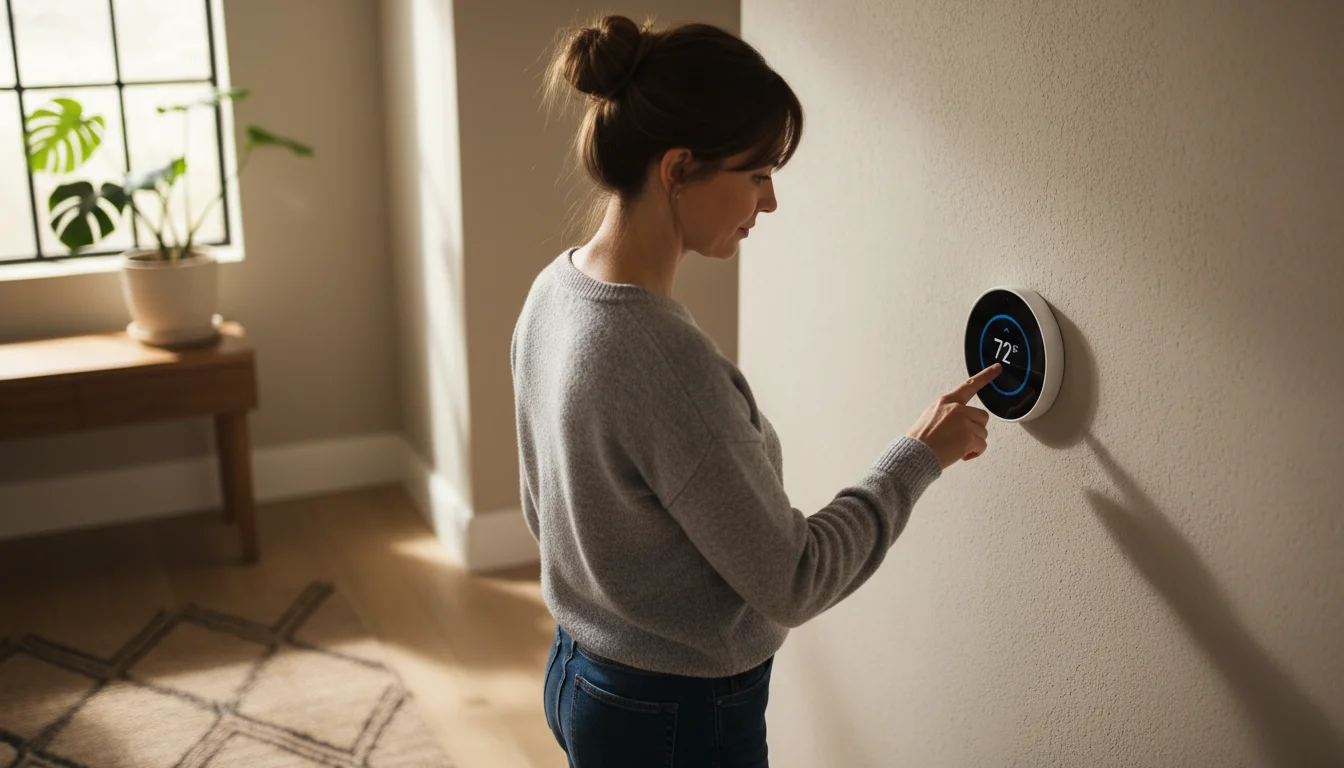
4. Test Your Thermostat
Ensure your thermostat works correctly by switching it from “heat” to “cool” and verifying that both functions engage. Program your thermostat for your spring and summer schedule to optimize energy savings. Smart thermostats learn your preferences, adjusting automatically to save energy when you are away or asleep. Energy Star states that properly programmed thermostats can save homeowners around $180 per year on energy bills.
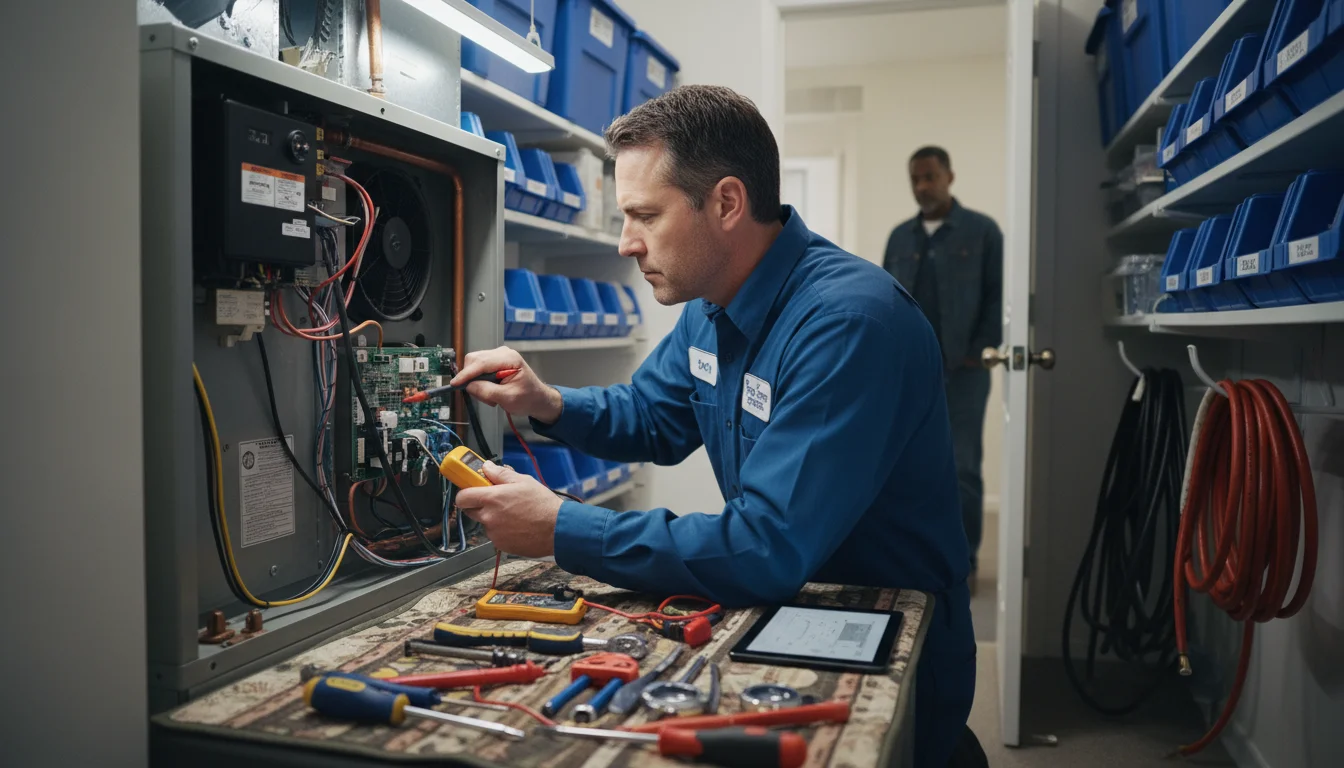
5. Consider a Professional Tune-Up
While many tasks are DIY-friendly, a professional spring tune-up is an excellent investment. A certified technician will inspect your entire system, clean components you cannot easily reach, check refrigerant levels, electrical connections, and calibrate your thermostat. This expert assessment often identifies potential issues before they become major problems, providing peace of mind as cooling season begins.
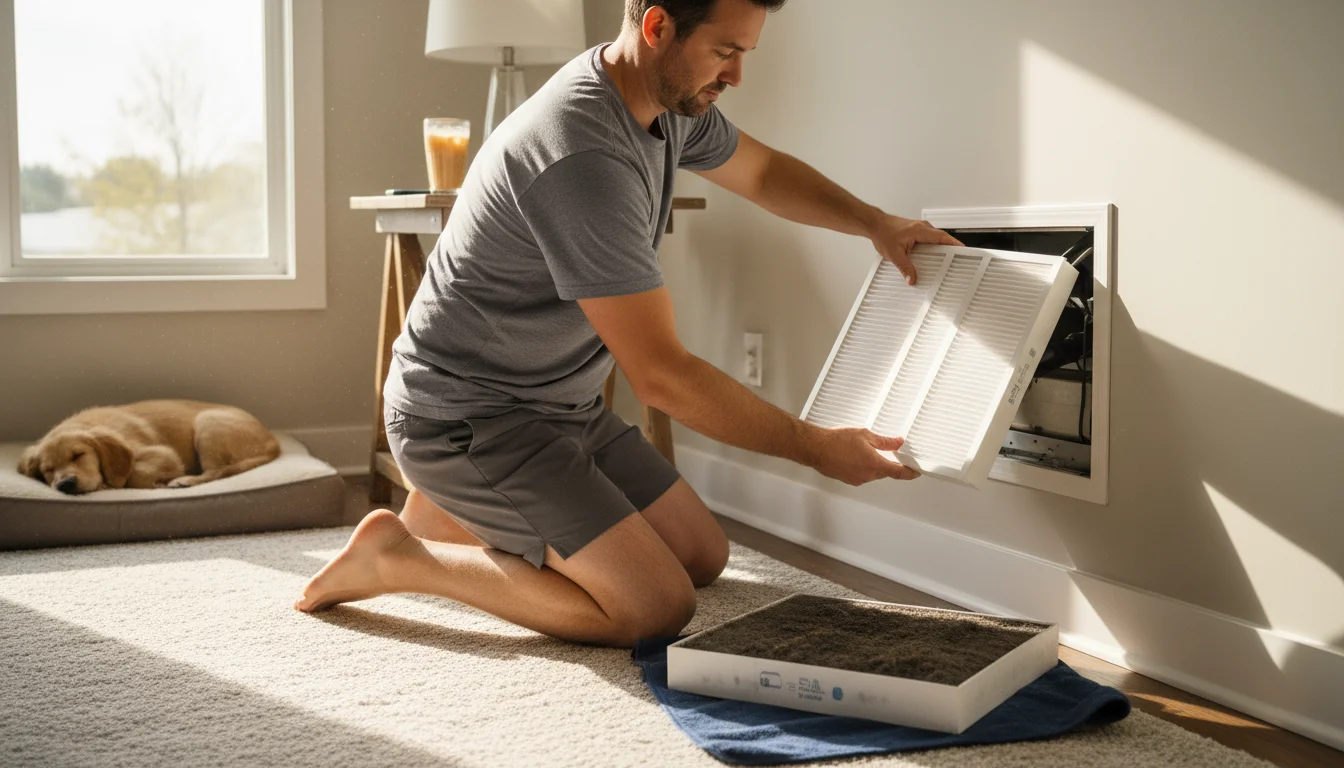
Summer Savvy: Keeping Cool Efficiently
Once summer arrives, your air conditioner works harder than any other season. Sustaining its performance throughout the hottest months requires continued attention, especially to your air filter change schedule. These simple steps keep your home cool and your system running efficiently.

1. Continue Regular Air Filter Changes
During peak cooling season, your air filter works overtime. The more your AC runs, the more airborne particles it collects. Aim to check your filter monthly and replace it as needed. A dirty filter restricts airflow, reducing efficiency and increasing energy consumption. This makes your system work harder, potentially shortening its lifespan.
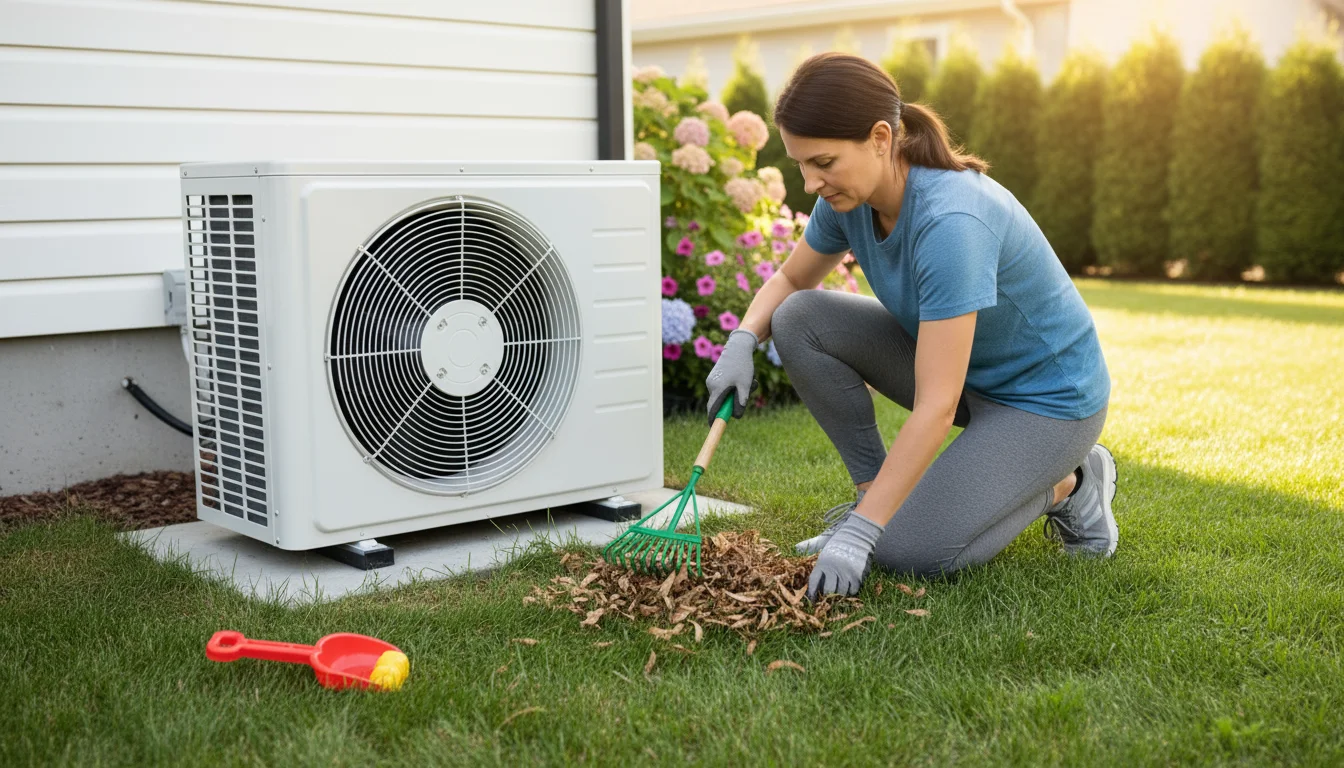
2. Keep Your Outdoor Unit Clear
Regularly check your outdoor condenser unit for any new obstructions. Grass clippings from mowing, fallen leaves, or even toys can impede airflow. Maintain a clear perimeter of at least two feet around the unit to ensure it receives adequate air circulation. This helps the unit efficiently release heat from your home, preventing it from overheating.
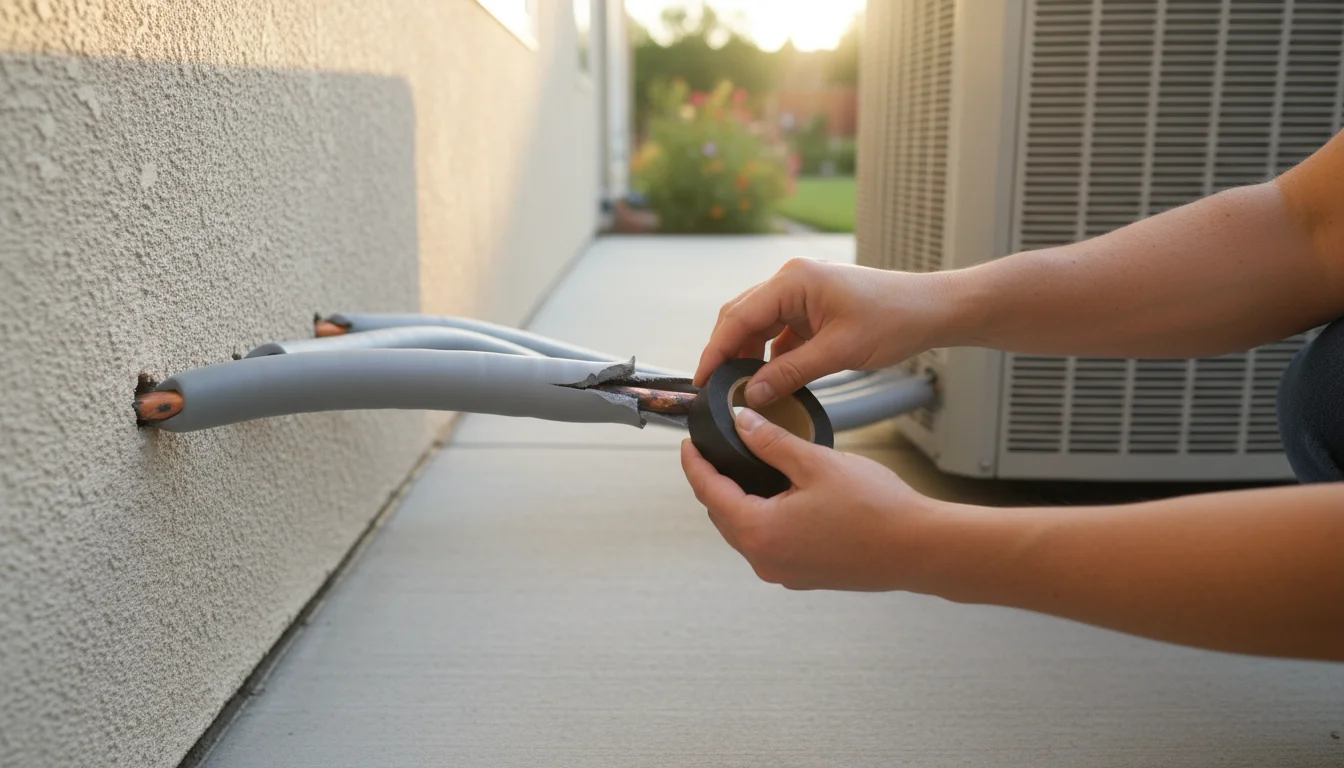
3. Monitor Your Refrigerant Lines
The refrigerant lines, which connect your outdoor and indoor units, should have insulation around them. This insulation helps maintain the refrigerant’s temperature, ensuring efficient cooling. Inspect the insulation for any tears or gaps. If you notice damage, you can repair it with appropriate foam tape or insulation sleeves from a hardware store. Exposed lines can reduce efficiency and lead to higher energy bills.

4. Keep Vents and Registers Unblocked
Inside your home, ensure no furniture, drapes, or rugs block your supply and return air vents. Blocked vents impede proper airflow, creating uneven temperatures and forcing your system to work harder. Keeping them clear ensures conditioned air circulates freely throughout your home, maintaining consistent comfort and efficiency.
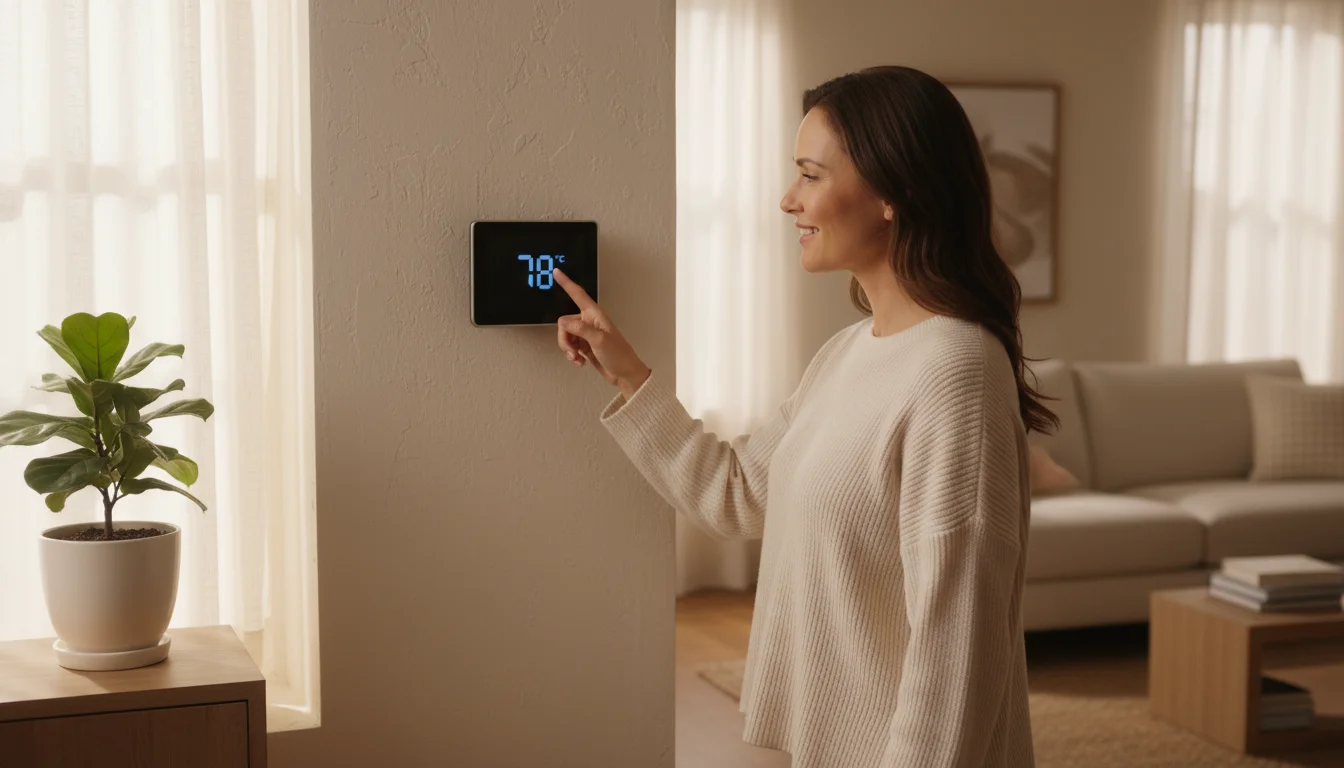
5. Use Your Thermostat Wisely
Resist the urge to blast the AC to a very low setting when you first arrive home. Lowering the temperature excessively does not cool your home faster; it just makes the system run longer, consuming more energy. Set your thermostat to the highest comfortable temperature, ideally around 78°F when you are home. Program it to raise the temperature when you are away to save energy.

Fall Prep: Getting Ready for Cooler Weather
As temperatures drop and leaves change color, your focus shifts from cooling to heating. Fall is a critical time for seasonal hvac care, ensuring your furnace operates safely and efficiently before the coldest months arrive. Proactive hvac maintenance now saves you from shivering later.
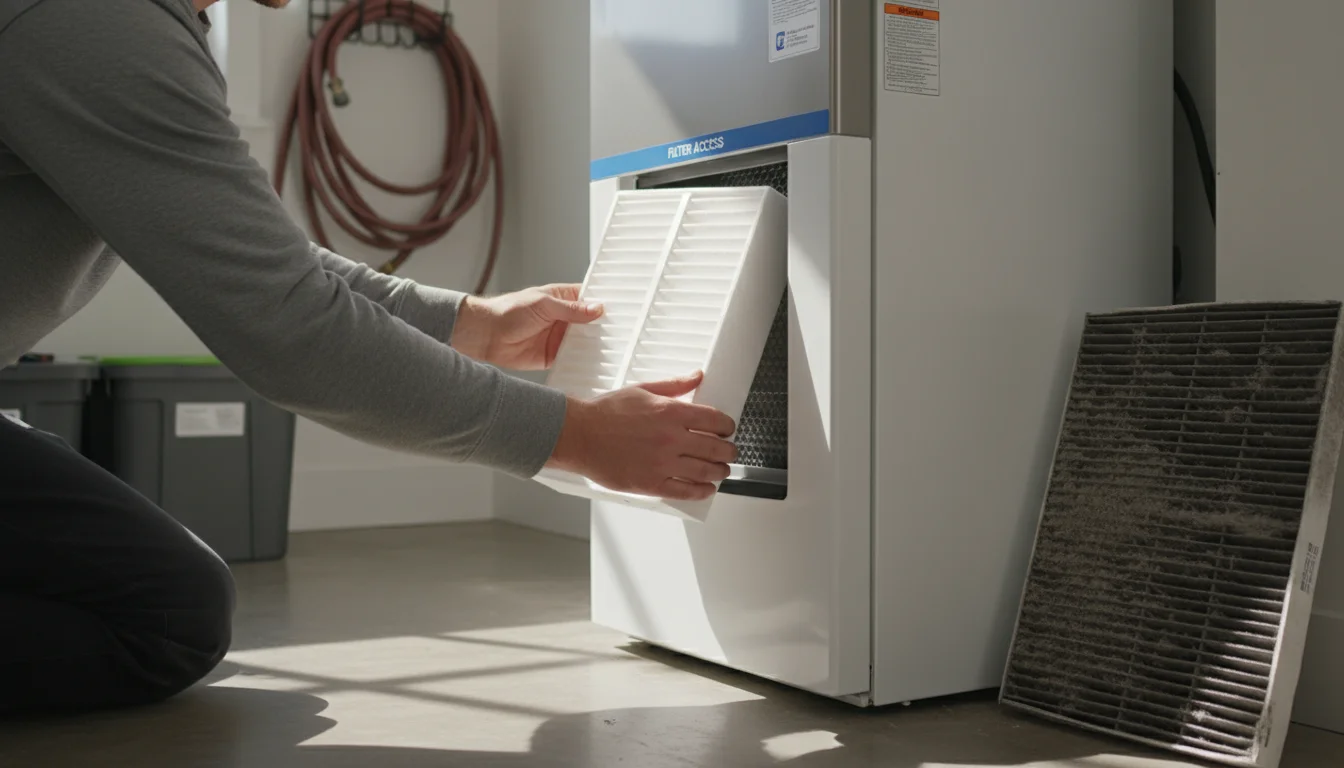
1. Replace Your Air Filter
Again, this is paramount. Your heating system will soon kick into high gear. Starting the season with a clean air filter reduces strain on your furnace, improves heating efficiency, and prevents dust recirculation. This step supports both comfort and air quality as you seal up your home for winter.
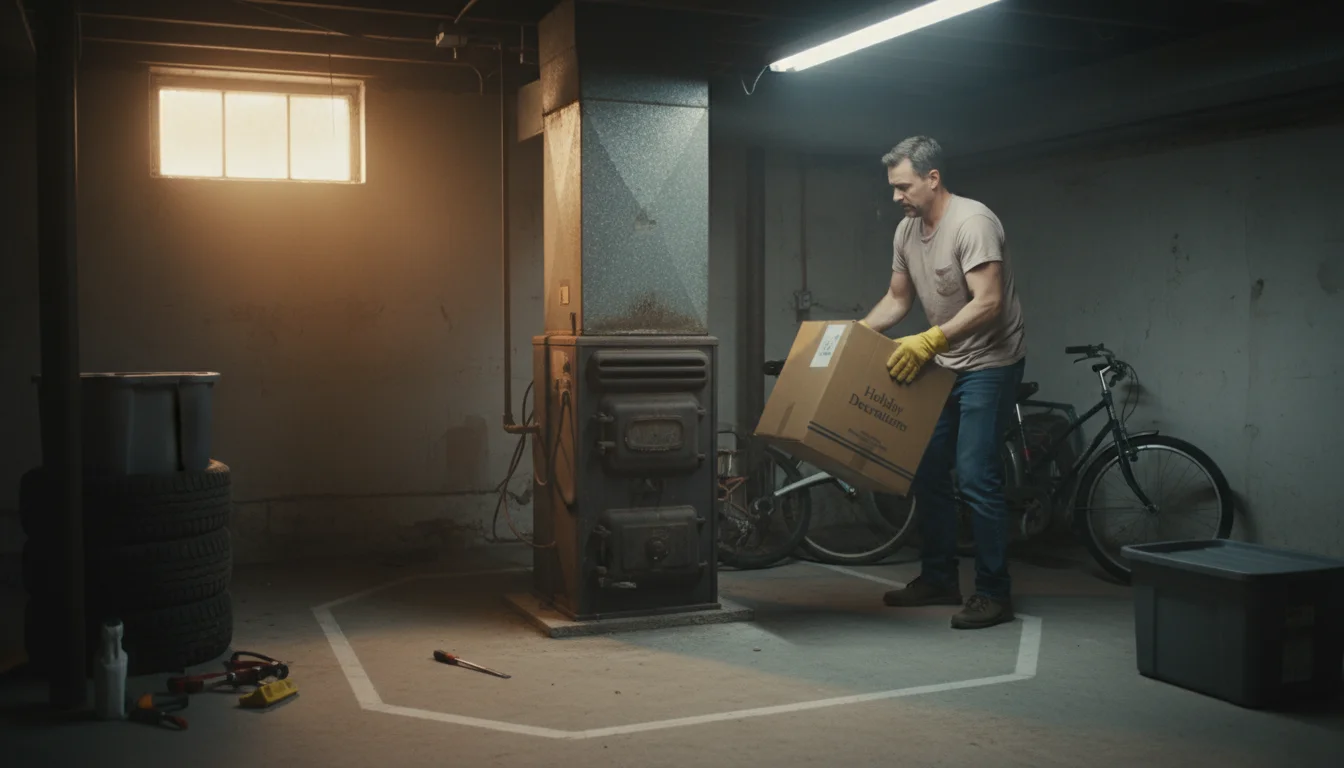
2. Inspect the Furnace Area
Your furnace often resides in a utility closet, basement, or attic. Ensure the area around it remains clear of anything flammable, such as boxes, clothing, or chemicals. Furnaces produce heat, and adequate clearance is essential for fire safety. Maintain at least a foot of clear space around the unit. Also, ensure the combustion air intake and exhaust vents are not blocked, especially if your furnace is in a small closet or utility room.

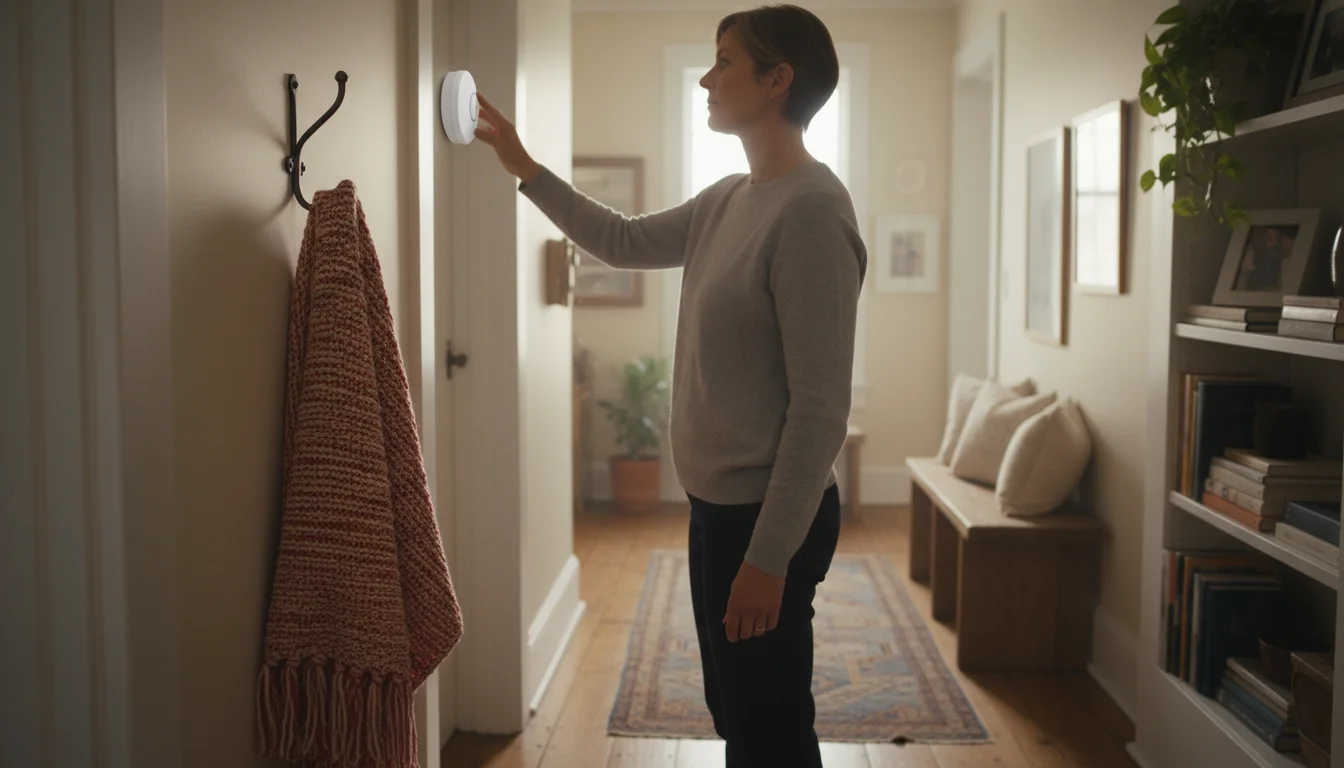
3. Test Carbon Monoxide Detectors
Carbon monoxide (CO) is a colorless, odorless gas produced by incomplete combustion in furnaces and other fuel-burning appliances. It is extremely dangerous and often called the “silent killer.” Before you rely heavily on your furnace, test your carbon monoxide detectors. Replace batteries if needed and ensure they are functioning correctly. If you do not have CO detectors, install them now, particularly near sleeping areas. This is a vital safety measure that cannot be overlooked.
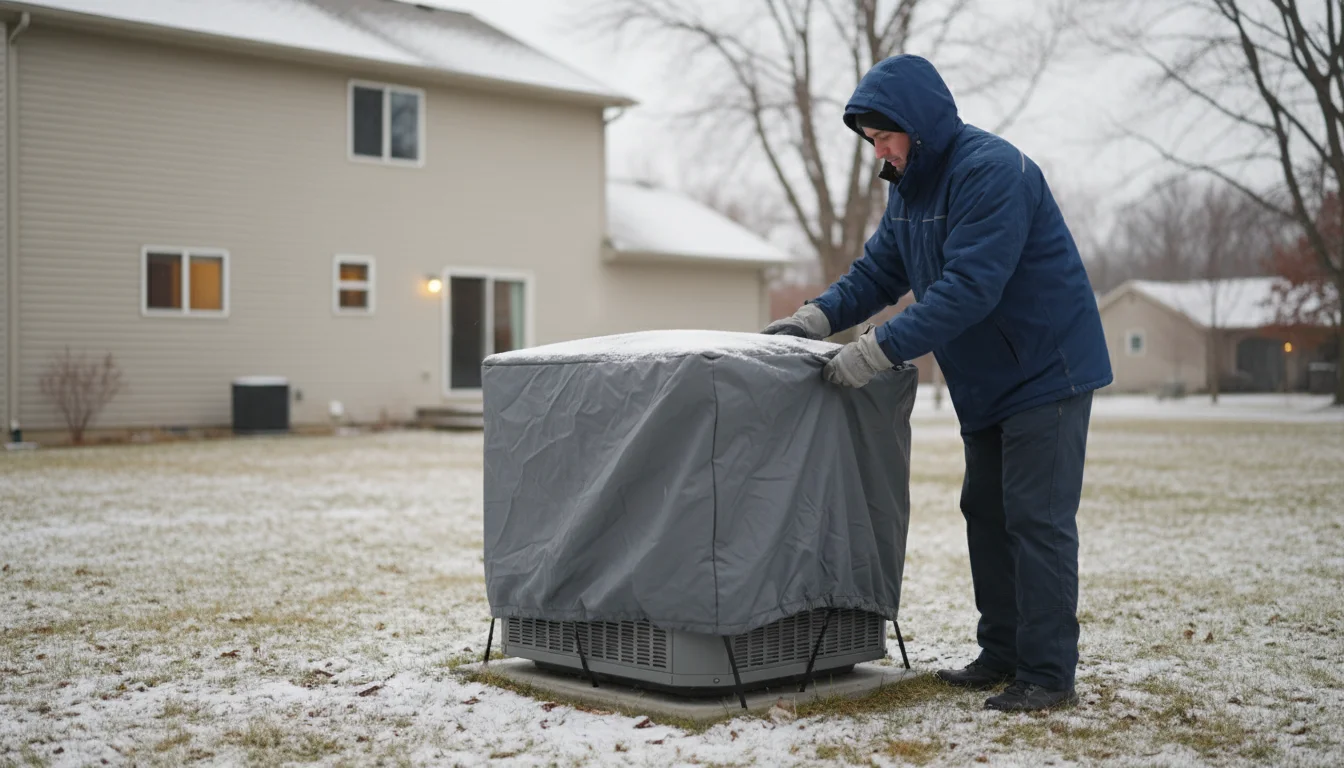
4. Consider Covering Your Outdoor AC Unit (Optional)
Some homeowners choose to cover their outdoor AC unit during winter. This can protect it from heavy snow, ice, and falling debris. If you opt for a cover, ensure it is breathable to prevent moisture buildup, which leads to rust or mold. Avoid completely sealing the unit, as this traps moisture. A partial cover that protects the top is often sufficient. Not all manufacturers recommend covering, so check your owner’s manual.

5. Check for Drafts and Seal Leaks
Before winter, walk around your home and identify any drafts coming from windows, doors, or electrical outlets. Seal these leaks with caulk or weatherstripping. Drafts allow heated air to escape and cold air to enter, forcing your furnace to work harder and consuming more energy. This simple step significantly impacts your home’s overall heating efficiency and comfort.
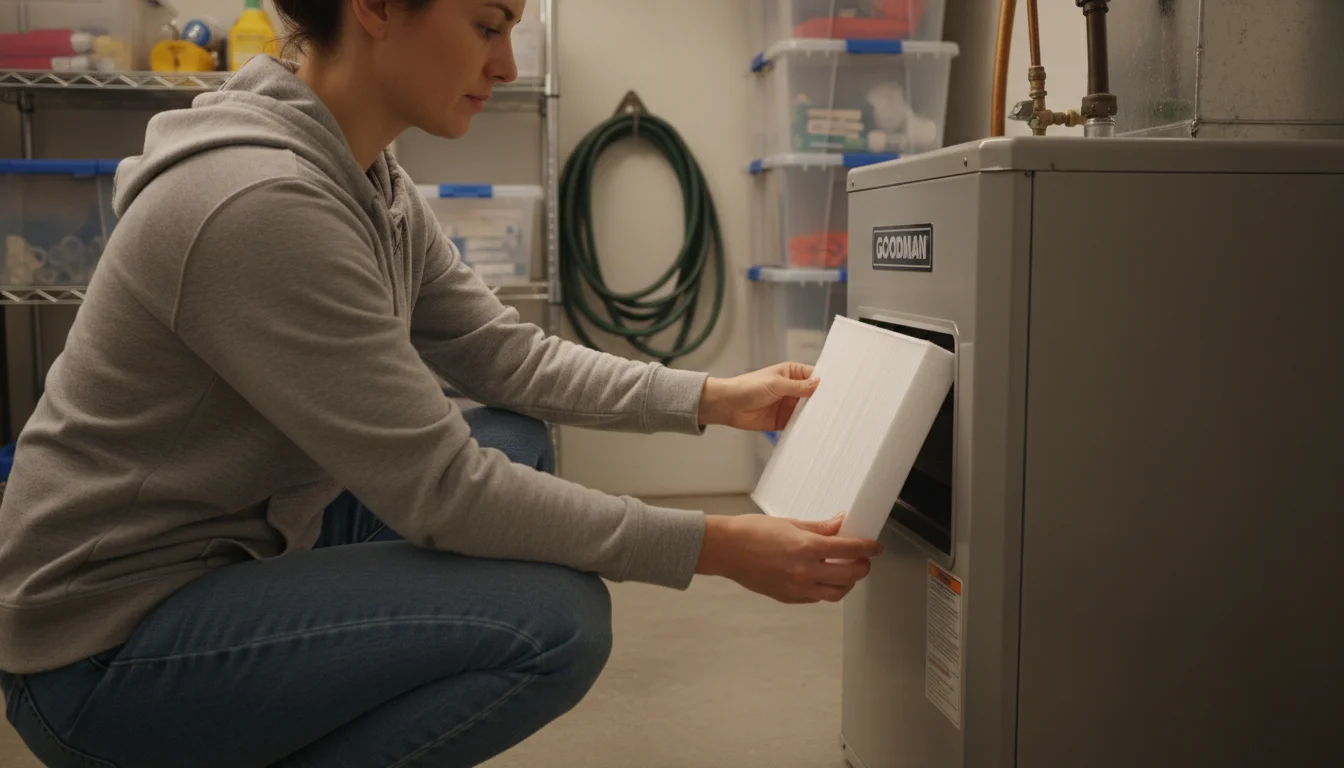
Winter Warmth: Maintaining Your Heating System
When winter arrives, your furnace becomes your best friend. Ongoing hvac maintenance during this period focuses on ensuring it runs smoothly and safely. These tasks help you stay warm and keep energy costs in check.

1. Consistent Air Filter Changes
Just like in other seasons, a clean air filter is non-negotiable. Your heating system constantly moves air, collecting dust and debris. A clogged filter reduces airflow, making your furnace work harder to heat your home, which increases energy consumption and wears down components. Check your filter monthly and replace it when it looks dirty, usually every 1-3 months.
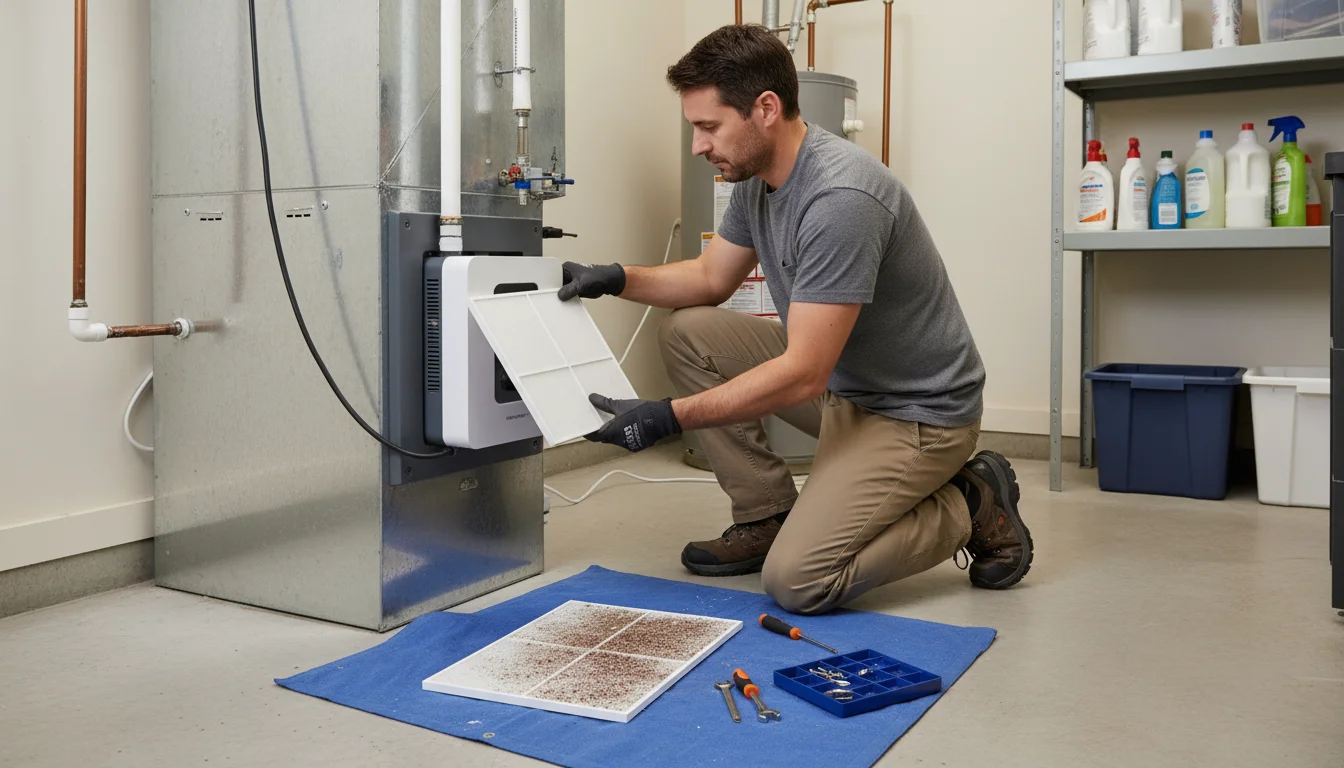
2. Check Your Humidifier (If Applicable)
Many homes with furnaces also have whole-house humidifiers to combat dry winter air. If you have one, clean and maintain it regularly. Replace the humidifier filter or water panel as recommended by the manufacturer. Scale and mineral deposits build up over time, reducing efficiency and potentially introducing mold into your indoor air. A well-maintained humidifier improves comfort and helps preserve wood furniture and floors from drying out.

3. Monitor Vents for Blockages
Ensure all your supply and return air vents remain clear of obstructions. Sometimes drapes, furniture, or even holiday decorations inadvertently block vents. Blocked vents restrict airflow, leading to uneven heating and increased energy usage. Make sure warm air reaches every room in your home effectively.
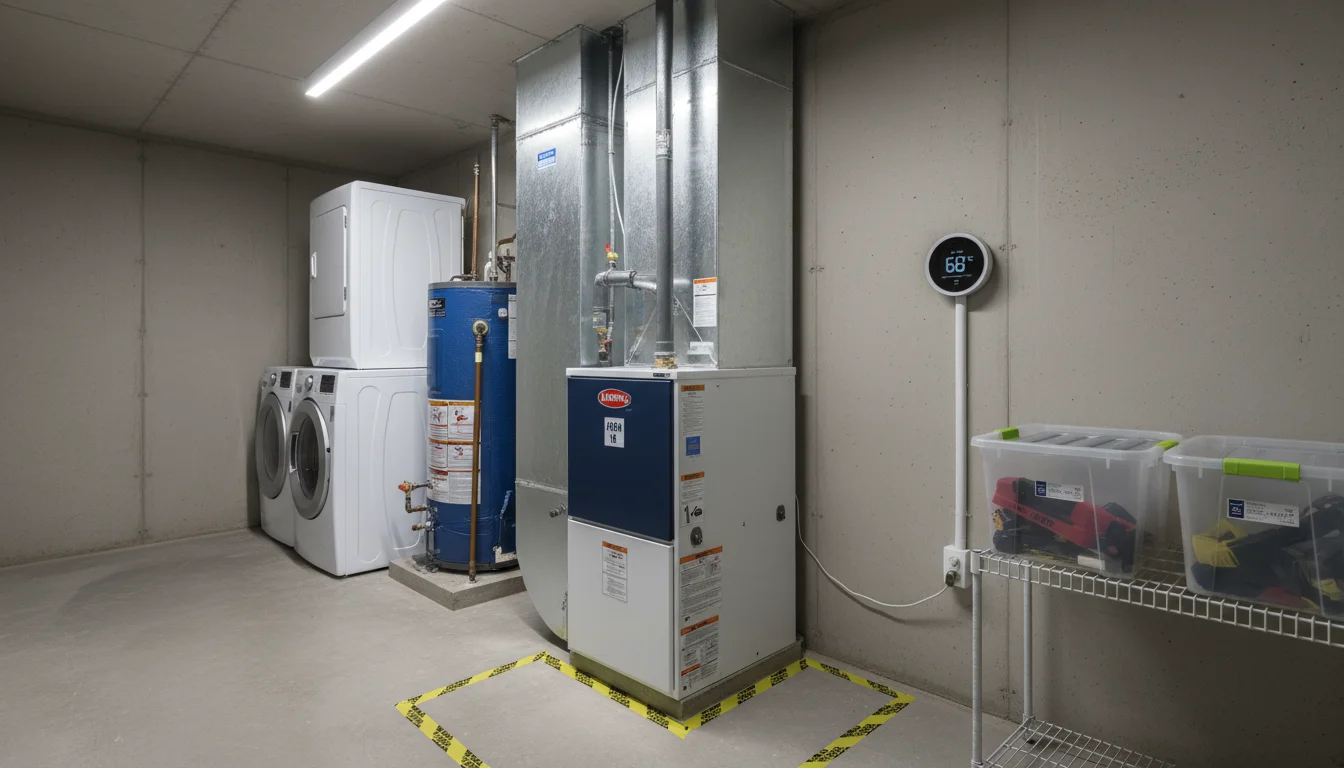
4. Keep the Area Around Your Furnace Clear
Reiterate the importance of keeping the furnace area free of clutter and flammable materials. With the furnace running frequently, maintaining this clear zone is crucial for fire safety. Always ensure proper ventilation around the unit.
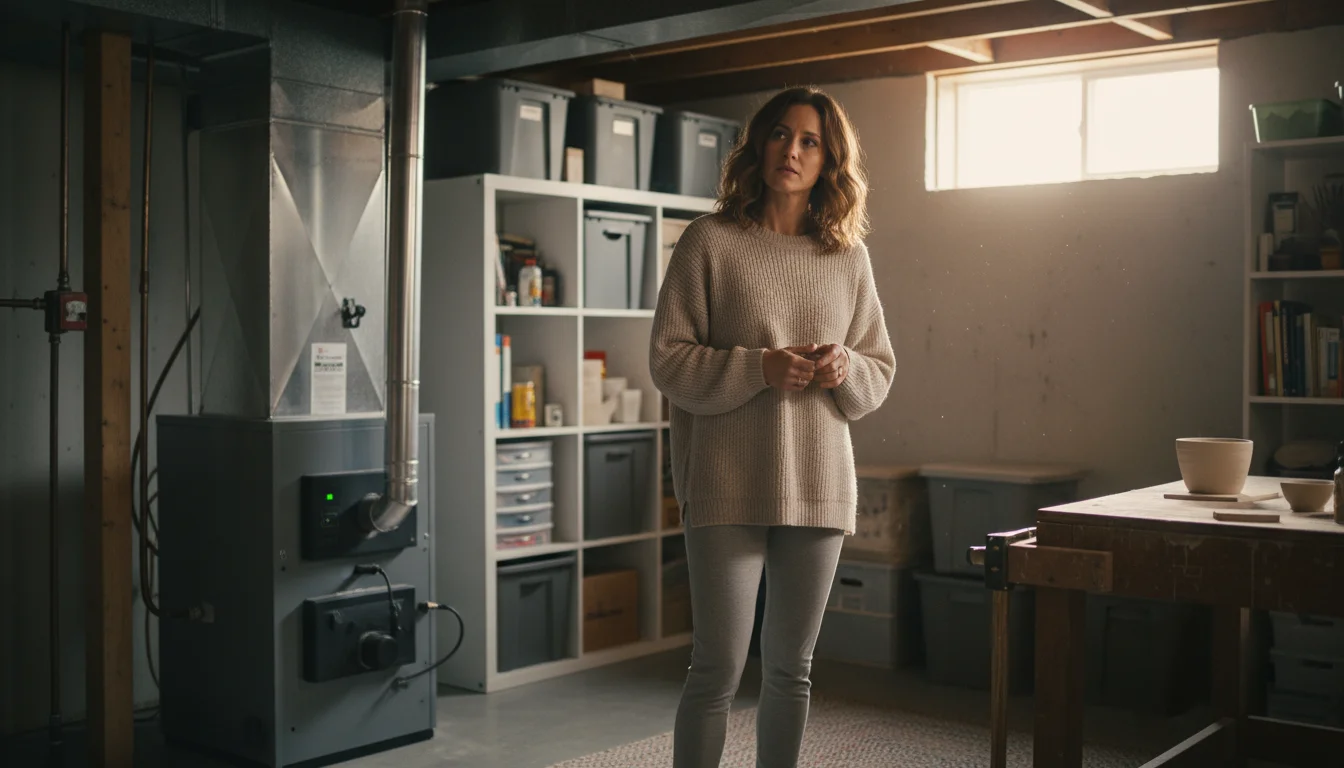
5. Listen and Observe
Pay attention to your furnace’s operation. Listen for unusual noises such as grinding, squealing, or banging. Observe if your furnace struggles to turn on, cycles too frequently, or if your home feels colder than your thermostat setting. These are all indicators that something might be amiss. Early detection of issues can prevent larger, more expensive problems. According to Consumer Reports, ignoring these warning signs can lead to premature system failure and higher repair costs.
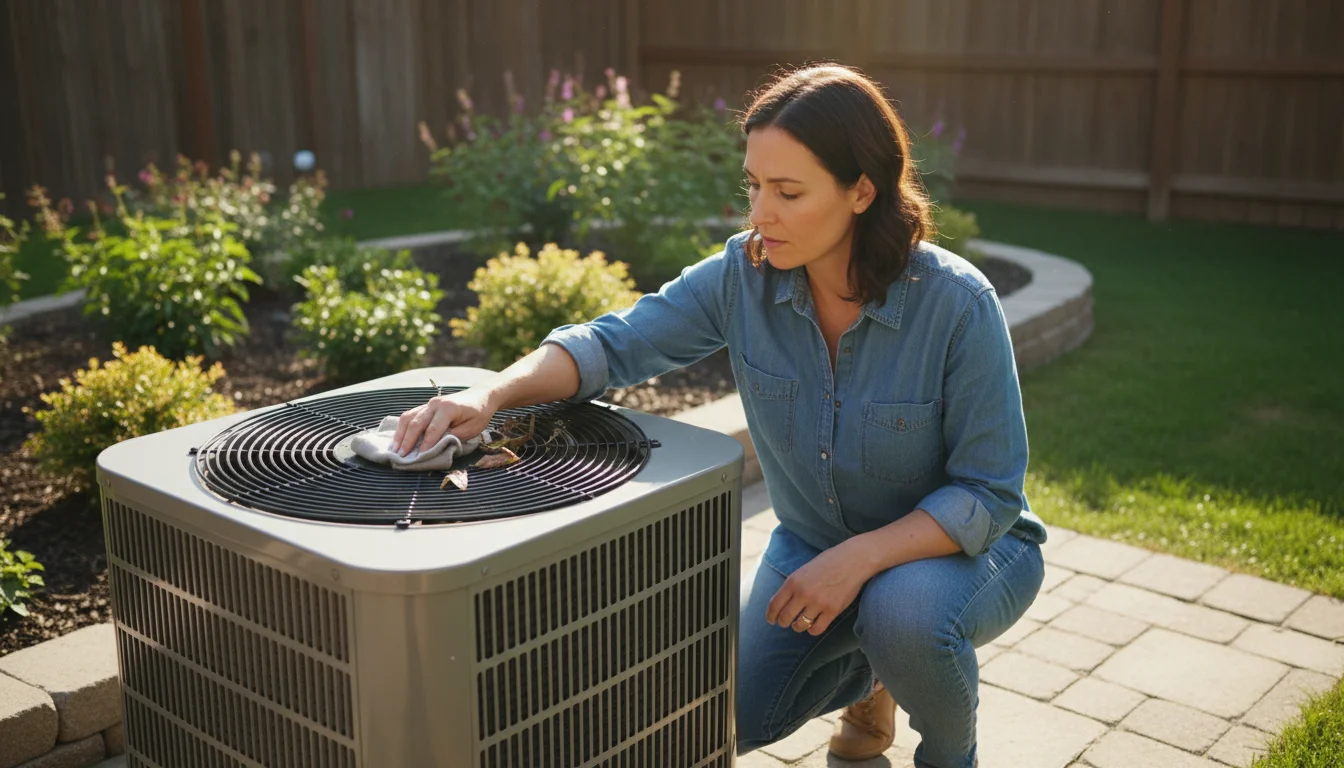
Troubleshooting Common HVAC Issues and When to Call a Pro
Even with diligent seasonal hvac care, issues sometimes arise. Knowing what common problems to look for helps you decide if a DIY fix is possible or if it is time to call a professional. This approach saves you money on unnecessary service calls and prevents minor problems from escalating.
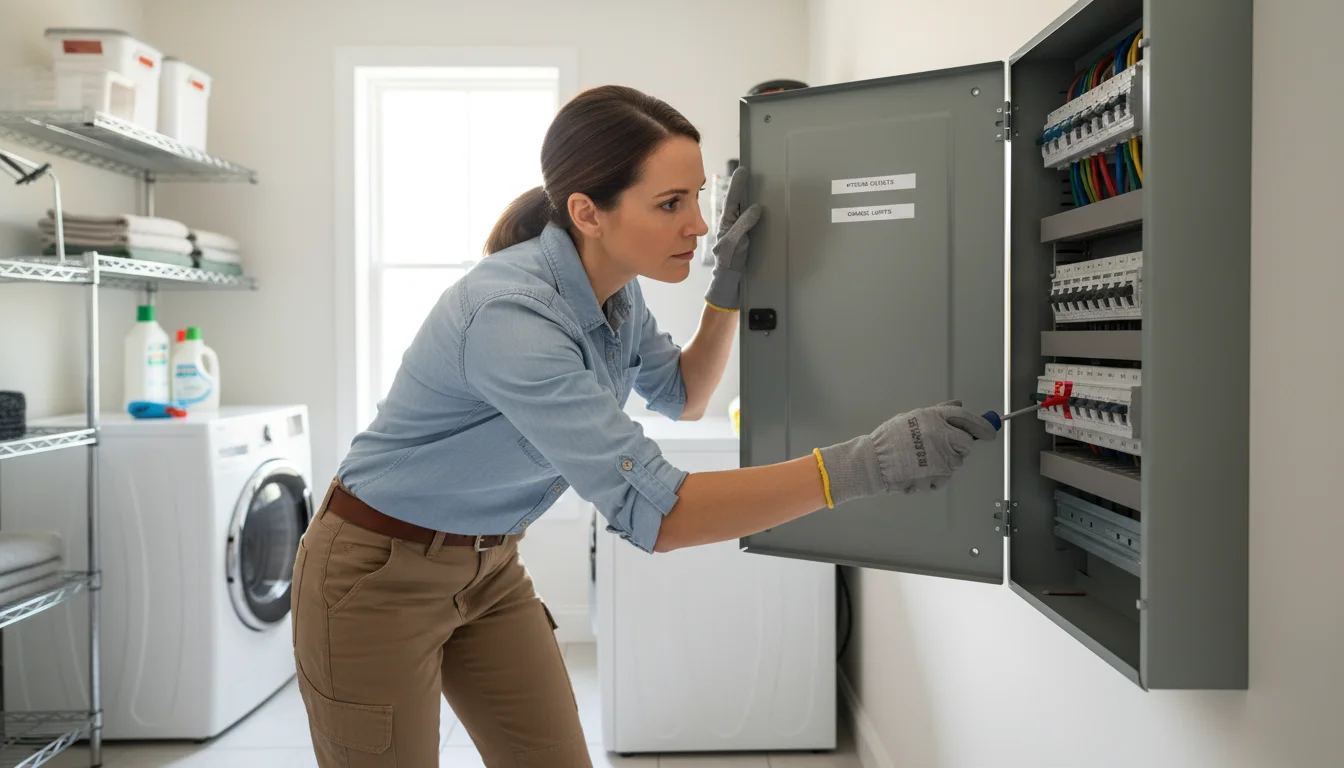
Common DIY Fixes:
- No Power to the System: Check your thermostat settings, ensuring it is on and set to the correct mode (heat/cool). Then, check your electrical panel for a tripped breaker related to your furnace or AC. Resetting a breaker can often resolve a power issue.
- System Not Heating or Cooling Sufficiently: Your first check should always be the air filter. A clogged filter is the most common culprit for poor performance. Ensure all vents remain open and unobstructed throughout your home.
- Strange Odors: A burning smell when you first turn on the furnace after a long break is often just dust burning off coils, which should dissipate quickly. A musty smell might indicate mold in the condensate drain or ductwork.
- Minor Water Leaks: For AC units, clear a clogged condensate drain line as described in the spring maintenance section. If the leak persists, it might indicate a more serious issue.
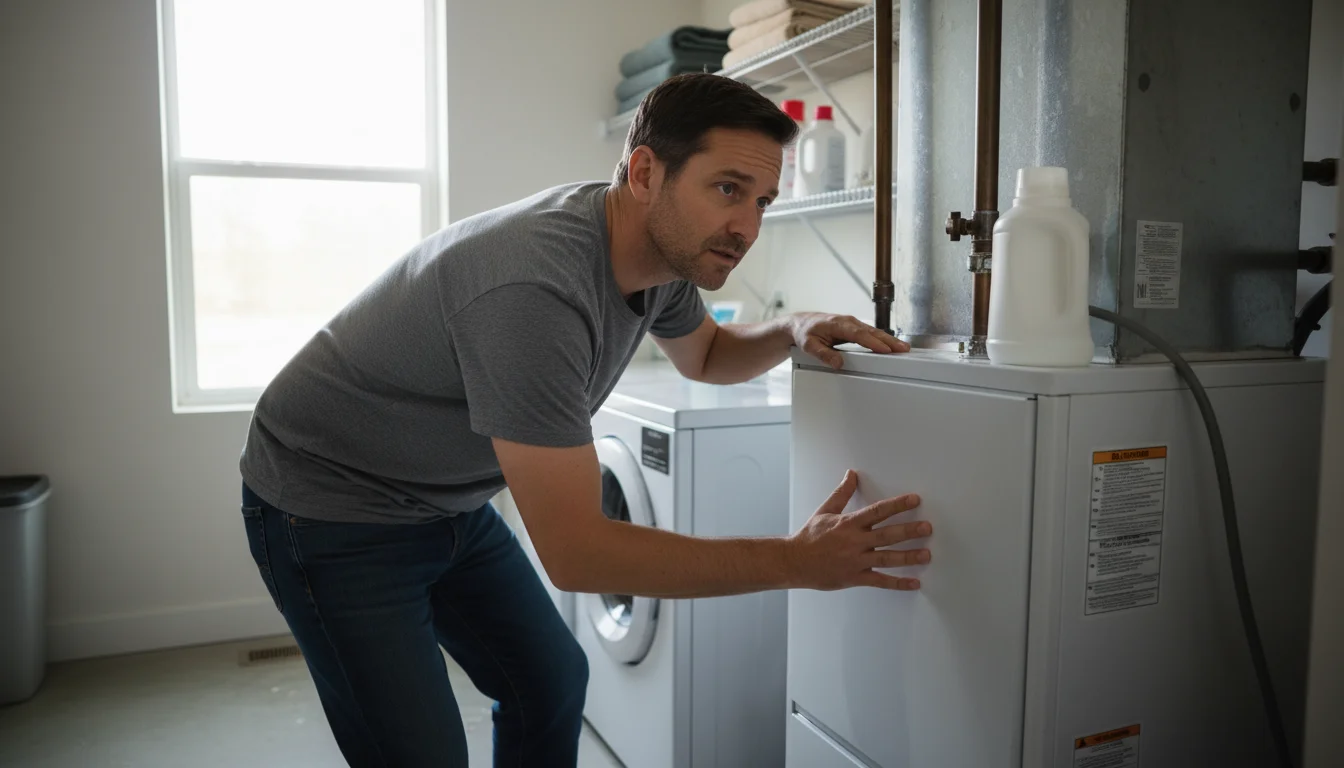
When to Call a Professional:
While DIY hvac maintenance is empowering and budget-friendly, some problems require expert attention. Do not hesitate to call a certified HVAC technician if you encounter:
- Refrigerant Leaks: If your AC cools poorly and you hear a hissing sound, or see ice on the refrigerant lines, you likely have a leak. This requires professional repair and recharging.
- Strange Noises: Grinding, banging, persistent squealing, or clanking noises often indicate a mechanical failure, such as a failing motor or fan blade.
- No Airflow: If the blower motor is not running at all, despite power to the unit, you need a technician.
- Gas Leaks: If you smell gas near your furnace, immediately turn off the gas supply, evacuate your home, and call your gas company and an HVAC professional. This is an emergency.
- System Short Cycling: When your system turns on and off too frequently, it suggests an underlying problem with sizing, airflow, or electrical components.
- Thermostat Malfunctions: If your thermostat works incorrectly after trying new batteries or resetting it, a professional can diagnose the issue.
Calling a professional when necessary prevents further damage, maintains warranty validity, and ensures your system operates safely and efficiently. Remember, your safety and the longevity of your system are paramount.
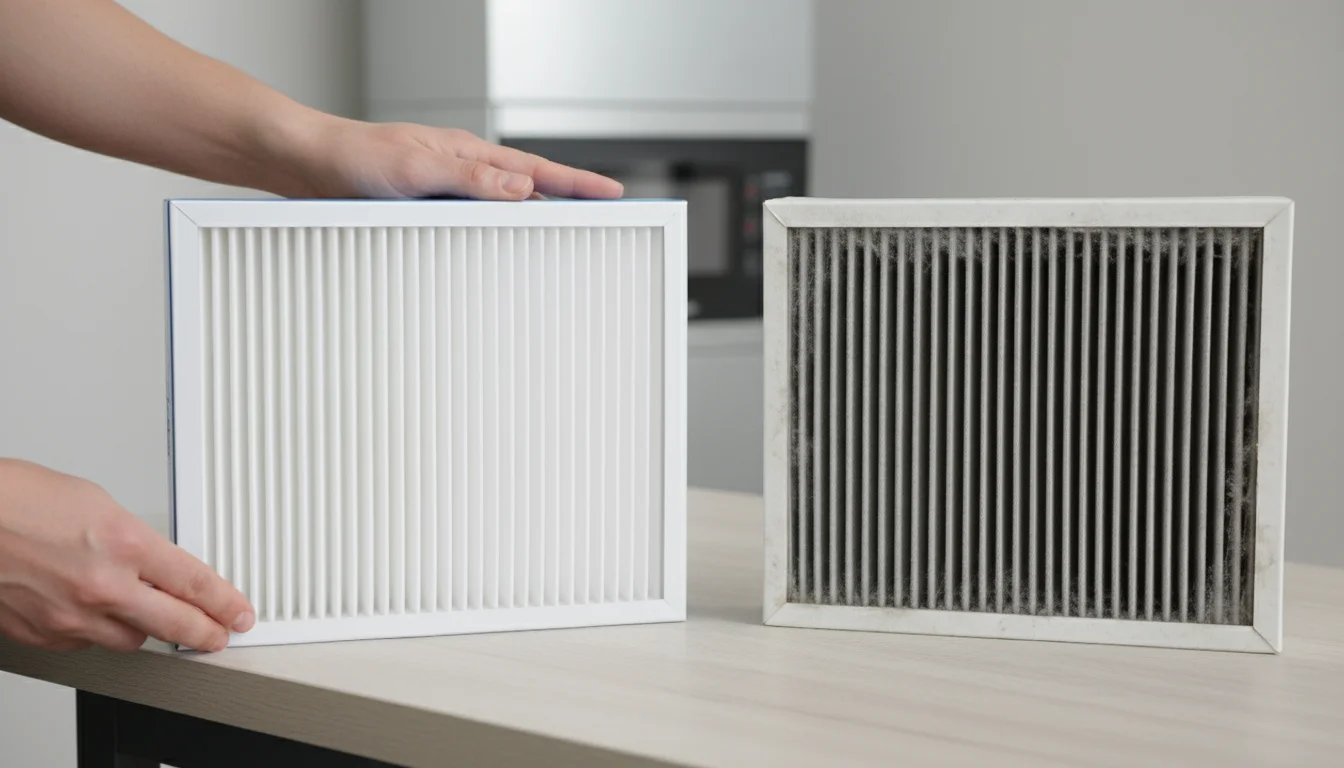
Your HVAC Maintenance Checklist: A Seasonal Guide
This comprehensive table summarizes your seasonal HVAC maintenance tasks, making it easy to integrate them into your home care routine. Consistent application of these steps significantly improves your system’s performance and lifespan.
| Season | Primary Focus | Key Tasks | Frequency / Notes |
|---|---|---|---|
| Year-Round | General System Health |
|
Monthly check, replace filter every 1-3 months. Daily observation. |
| Spring | Preparing for Cooling |
|
Early spring, before sustained warm weather. |
| Summer | Efficient Cooling |
|
Throughout summer, especially during peak heat. |
| Fall | Preparing for Heating |
|
Early fall, before sustained cold weather. |
| Winter | Reliable Heating |
|
Throughout winter, especially during peak cold. |

Frequently Asked Questions
How often should I change my air filter?
Most experts recommend changing your HVAC air filter every one to three months. Factors like pets, allergies, smoking, or living in a dusty environment might require more frequent changes, possibly even monthly. Visually inspect your filter each month and replace it if it looks dirty or clogged, regardless of the calendar.
Can I perform all HVAC maintenance myself?
You can perform many simple, routine hvac maintenance tasks yourself, such as changing air filters, cleaning the outdoor unit, and checking condensate drains. However, complex tasks like checking refrigerant levels, cleaning evaporator coils, or diagnosing electrical issues require a certified professional. It is wise to schedule professional tune-ups annually for both your furnace and AC unit to ensure optimal performance and catch potential problems early.
What are the warning signs of a failing HVAC system?
Key warning signs include unusual noises (grinding, squealing, banging), strange odors (burning, musty), inconsistent heating or cooling, a sudden spike in energy bills without increased usage, frequent on/off cycling (short cycling), or a complete lack of airflow. Addressing these signs promptly prevents further damage and costly repairs.
How does seasonal HVAC care genuinely save money?
Seasonal hvac care saves you money in several ways. It improves energy efficiency, reducing your monthly utility bills. It extends the lifespan of your system, delaying expensive replacement costs. Regular maintenance also catches minor issues before they become major, costly breakdowns, saving you from emergency repair fees. It is a proactive investment that delivers measurable financial returns.
Is a professional HVAC tune-up really necessary if I do my own maintenance?
Yes, professional tune-ups remain highly recommended even if you perform regular DIY hvac maintenance. Technicians possess specialized tools and expertise to perform deeper cleaning, check refrigerant levels, calibrate components, test electrical connections, and identify subtle issues you might overlook. A professional tune-up ensures your system operates at peak efficiency, maintains warranty validity, and helps prevent unexpected breakdowns.
By integrating these simple, seasonal hvac maintenance tasks into your home routine, you take control of your comfort, your budget, and the longevity of your home’s most vital climate control system. Consistent air filter change and other proactive steps ensure your home remains a comfortable and healthy space all year round.
For expert home organization guidance, visit
Better Homes & Gardens — Home Organization,
EPA — Indoor Air Quality and
Energy Star.
Disclaimer: This article is for informational purposes only and is not a substitute for professional advice. Consult professional organizers or specialists for personalized recommendations.








Leave a Reply